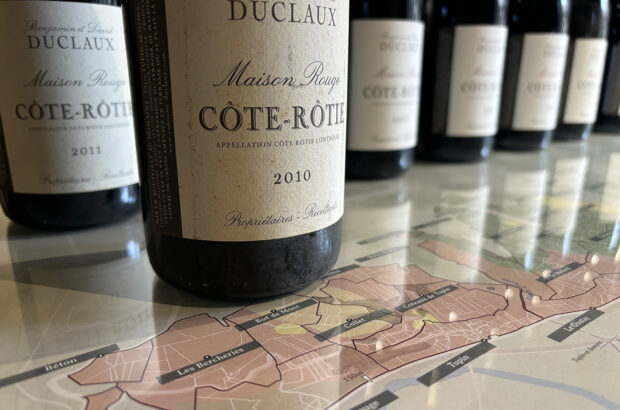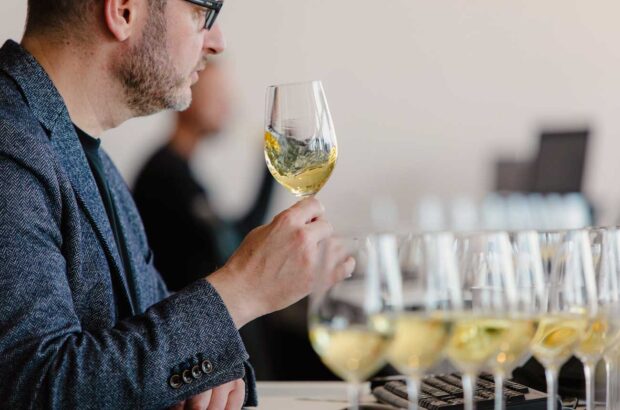PHILIPP BLOM explains the ins and outs of the wine-growing areas in Austria.
The wine regions in Austria:
Wachau (1,400ha)
The Wachau, Austria’s most famous wine-growing region, stretches along the Danube for some 20km, mainly on the northern bank, between Krems to the east and Mühlberg to the west, 97km to the west of Vienna. Vineyards are often terraced into steep hillsides. Famous for its Rieslings and Grüner Veltliners which can have astonishing expression, complexity, and depth, and can age longer than the oldest extant bottles (1921) can demonstrate, the Wachau also produces other wines, such as Pinot Blanc, Chardonnay, Gelber Muskateller, and Sauvignon Blanc.
Soils: primary rock, loess, gneiss, crystalline slate, sand.
https://www.decanter.com/features/great-wine-route-the-wachau-249165/
Kremstal (2,200ha)
The Kremstal has been slow to realise its potential for excellence, demonstrated by its neighbours, Wachau and Kamptal. A part of the reason for this is that much of the vineyard surface is controlled by a not-very-exciting coop. Some winemakers, however, show what is possible, and their outstanding Grüner Veltliners and Rieslings, often more approachable than those from the Wachau, are among the best of Austria.
Soils: primary rock, loess, and gravel.
Kamptal (3,850ha)
The valley of the river Kamp, to the southeast of the Wachau and some 80km west of Vienna in Austria, benefits from the climatic influence of the Danube and the Waldeviertel forests. The grapes ripening in great vineyards like Heiligenstein and Lamm (mainly Grüner Veltliner and Riesling) have great ageing potential. Recently, some very interesting Pinot Noirs have been made here,too.
Soils: primary rock, loam, loess, slate.
Traisental (700ha)
Austria’s youngest wine-growing region also has one of the oldest wine histories, going back to the Celts. The majority of the wines made here are fragrant and direct, pleasant rather than great.
Soils: sand, gravel, loam.
Donauland (2,700ha)
An administrative rather than a traditional entity, this region has three distinct wine areas: the Wagram to the north, the eastern part around the town of Klosterneuburg, and the Tulbingerkogl area, famous for its ice wines. The wines from this area can be very different, and especially in the Wagram an association of growers is trying to sharpen their profile. Winemakers here regularly surprise the wine world with outstanding whites and interesting reds.
Soils: loess, gravel, loam.
Weinviertel (16,000ha)
The largest wine-growing region in Austria by far, the Weinviertel is still overwhelmingly producing simple table wines (mainly white) for everyday drinking. There are, however, some – too few – winemakers making truly great wine and setting new standards, both with traditional varietals such as Grüner Veltliner, Neuburger and Welschriesling for whites and Blauer Portugieser and Zweigelt for reds, and with the more familiar, international grapes, including Merlot, Cabernet Sauvignon and Viognier.
Soils: loess, loam, primary rock, black earth.
Carnuntum (1,000ha)
Named after the largest city of the Roman border colony, Carnuntum is sandwiched between the Weinviertel and the Burgenland and has been struggling to establish a distinctive identity. The wines of Austria from this area can be beautifully meaty: big reds and sumptuous whites.
Soils: sand, loam, gravel, loess.
Thermenregion (2,500ha)
The winemakers of this region to the south of Vienna believe in regional individuality and cultivate two white grapes, Zierfandler and Rotgipfler, which are to be found only here. Some of their colleagues use the Burgundian soil and climatic conditions to produce very interesting reds.
Soils: chalky loam, gravel, clay, sand.
Burgenland (four subdivisions, 16,000ha in total)
– Neusiedlersee (8,000ha)
Famous for its great botrytised wines made by the sandy shores of long, shallow lake Neusiedl, this area also has excellent Chardonnay and outstanding red wines further away from the lake. Here, as in the rest of the Burgenland, the climatic influence of the lake interacts with the continental climate of the Hungarian plains.
Soils: loess, black earth, gravel, sand.
– Neusiedlersee-Hugelland (5,300ha)
On the opposite, western shore of the lake, the centre of this area is the historic wine town of Rust, famous for its botrytised sweet ausbruch wines. The hills a little further inland often produce profound red and white wines of, at times, astonishing complexity.
Soils: loess, black earth, sand, loam.
– Mittelburgenland (1,900ha)
The ‘Blaufränkisch Land’ calls itself after the dominant, red varietal of the area. In the hands of good growers its peppery profundity can be wonderful.
Soils: sand, gravel, loam.
– Sudburgenland (400ha)
The hills of South Burgenland with their dense forests are famous especially for their red wines, often Blaufränkisch.
Soils: slate, clay, loam.
Steiermark (or Styria, three subdivisions, 3,750ha in total)
– Sudsteiermark (1,900ha)
With a climate touched by southern influences, the rolling hills of Southern Styria are ideal for white wines, especially Sauvignon Blanc and Chardonnay, called Morillon in Styria. The quality pyramid is steep, with only a few producers at the top. These, however, make white wines of truly great quality and depth. Red wines are on the increase.
Soils: slate, sand, marl.
– Sudoststeiermark (1,200ha)
This wooded area has relatively few vineyards. Top producers make exceptional wines, Chardonnay and Sauvignon Blanc often the finest. Other regional specialities include Muskateller and impressively deep red cuvées.
Soils: basalt, volcanic soils, sand, loam.
– Weststeiermark (480ha)
This tiny area is dedicated almost entirely to one, very eccentric, varietal: Blauer Wildbacher, a red grape vinified as a very bracing rosé.
Soils: gneiss, slate.







